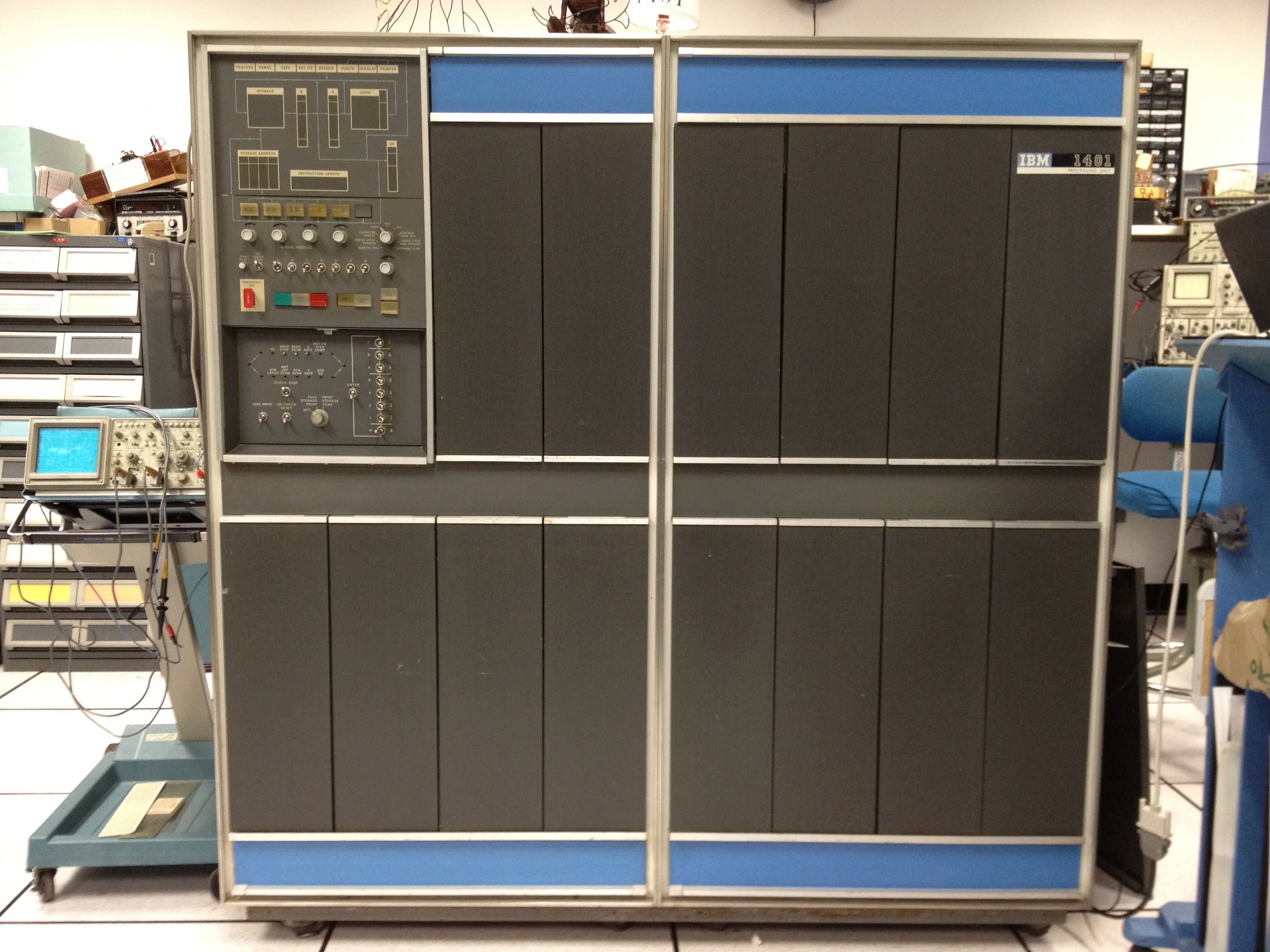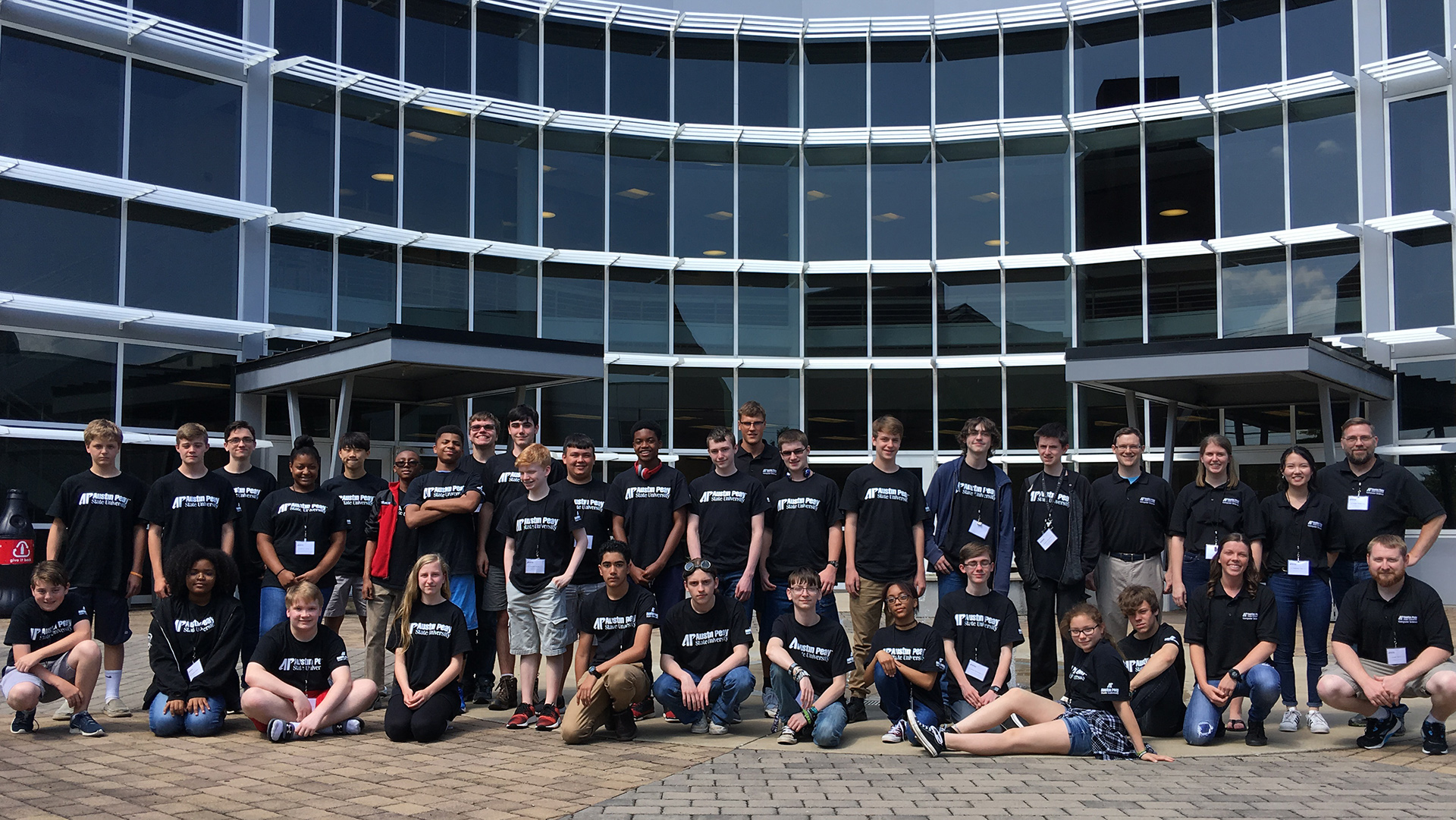Computer Science & Information Technology Department History
A journey through the history of the department, from the beginnings with the Math Department to our current-day presence as part of the university.
From Humble Beginnings

The Computer Science and Information Technology department began not as a complete department, but as one class in 1970 that was a part of the Math department. Taught by Dr. George Brotherton, Students learned Fortran IV and worked with the IBM 1401 using punch cards. This computer was revolutionary in the business world for being one of the first machines that could store programs. (Computer History Museum). It could only run one program at a time, though. This led to students only getting a few times to try and run their program. The 1401 ran on punch cards, numbered cards with holes that the computer could read and interpret as instructions. One punch card was one line of code, so a programmer would quickly end up with a box full of different cards. One of the bigger challenges the early students faced was making sure that their punch cards did not get out of order, if one was to drop their box of cards they would have a long night of sorting ahead of them.
This initial course was a success, and led to a growth of computer science focused classes being offered by the Math Department. In 1975/76, the first minor in computer science was added, followed soon in 1979 by the first official computer science major: Computer Science and Information Systems. The first graduates from this program were in the winter term of 1980. Computing technology had been rapidly growing at this point, and punch cards were quickly becoming a thing of the past. The last class taught with punch cards was the IBM assembler class in 1981.
With technology rapidly growing, the school's hardware had to grow with it. This came in the form of the VAX11/780, a 32 bit computer made by Digital Equipment Corporation, or DEC (ComputerHistory.org). The 32-bit computer had 11 terminals hooked up to it in the classroom, allowing multiple students to be working each on their own terminal. The 250 kilobyte machine could hold up to 100 users, though. Working on this machine would have looked similar to a DOS prompt, with just a basic keyboard and text on the monitor. Every key press had to actually go to the VAX for processing, and then the character would appear on the student's screen. Even with only 250 kilobytes of memory, this machine was more than capable of handling all the student's needs at the time.
As technology moved on, The lab moved to using TRS-80's by the Tandy Corporation for a time. These were upgraded to IBM 386 computers through a partnership with Dell Corporation organized by the Tennessee Board of Regeants. These PC's had terminal emulation, and VAX basic was taught using them.
The advent of the IBM PC led to yet another upgrade in the late 1990s. Having multiple PCs made it easier for each student to complete work on a confined set of hardware that wasn't dealing with any other conflicting work. The computer lab was adjusted to work with this new setup, with one printer for every two PCs. Ms. Smithfield, the then-lab manager, notes that it wasn't uncommon for students to have to ask the person sitting next to them if it was ok to switch the printer to their PC using a physical switch on the printer.

The open lab had interesting technology aside from just the IBM PC's. To be classified as an open lab, they had to have Macintosh machines, leading to a few Mac's being in one section of the lab. There was a basic scanner hooked to one of the machines, as any good computer lab should have. There was a basic dot matrix printer, which was then upgraded to the multiple printers for ever two PC's as previously described. Eventually, this was upgraded to one laser printer hooked to every PC through a network, as it still is today.
These advancements in computing meant that the courses had to keep up with the new technology. Some things were able to stay similar, such as with teaching VAX Basic even on the IBM 386 machines. Other things, like using punch cards, were quickly phased out when they became redundant. The basics of programming are always rooted in the same ideas of logic, so thankfully there didn't need to be a complete overhaul of the courses every year. Even so, constantly keeping up with computing trends and overseeing all the Math needs of the university was much for one department to handle, as would soon be seen in 2003.
Forging onward through Growing Pains
Two major developments happened to computer science in 2003. The first major development was the addition of two new concentrations: Internet and Web Technology and Database Administration. The second major development was a split of computer science from the math department, creating the Department of Computer Science and Information Technology. Dr. Myers was appointed as the chair. The split was pushed for by then-president Sherry Hoppe, who also helped the department gain traction and flourish. Dr. Myers, Dr. Vandergriff, Ms. Smithfield, and Dr. Bateman were the original professors of the department.
The department was located in the Claxton building. There were 5 offices alltogether, 1 office being part of the math suite. Dr. Myers had a separate office as the chair. There were 2 classrooms, one teaching lab room, and an open computer lab. Originally, the networking lab was just in the back of the teaching lab, but was eventually moved to under the Clement Auditorium thanks to Dr. Li. This new networking room was, however, notable for being one of the few rooms to have a slanted floor. Overall, there was little space for the growing department, especially with regards to areas for the students to work. Graduate students recounted laying in the stairwell and doing their programming.
Even with a tight area to work with, the department kept growing. In Fall 2013 the department got their first Master's Degree program, and a new Networking concentration was added in 2014. With all this growth, The department needed more space. And so, the Maynard Mathematics and Computer Science Building was born.
Moving on up - and into Maynard
On August 24, 2011, university president Timothy Hall announced that there would be a new Math and Computer Science building. This 6 million dollar project was paid for entirely with University funds, a feat possible because this new building would also house the school's data center, allowing funds from the physical plant to be used in crafting the newest addition to the campus (The All State). Physical Construction on the building began in August 2012, and was completed in late 2013 (The All State). The department moved into the new building in January 2014, and they have been there since.
Many tools used in the computer science industry focus on Microsoft-based tools, such as the IDE Visual Studio and Microsoft SQL. This brought a switch over to Windows-based systems when Dr. Joseph Elarde took over as the general lab manager in Fall 2014. The department still uses Microsoft Windows as their main operating system working on Dell All-In-Ones. The department worked with Windows 7 until Fall 2017, when they upgraded to Windows 10.
The academic side of the department saw many advances since the transition into Maynard. A minor in Information Assurance and Security was added in Fall 2015, becoming a full concentration in Fall 2017. The department added the first MS Master's Degree in Computer Science and Quantitative Methods in 2016.
The department has certainly come a long way since it's inception as a simple Fortran IV punch card course. It has expanded into numerous fields, such as internet and web, networking, and security, expanding so much to require a new building to be built for the department in conjunction with the math department. With all of the advances made and the growing need for new computer scientists, the future is bright for the department of Computer Science and Information Technology at Austin Peay.
